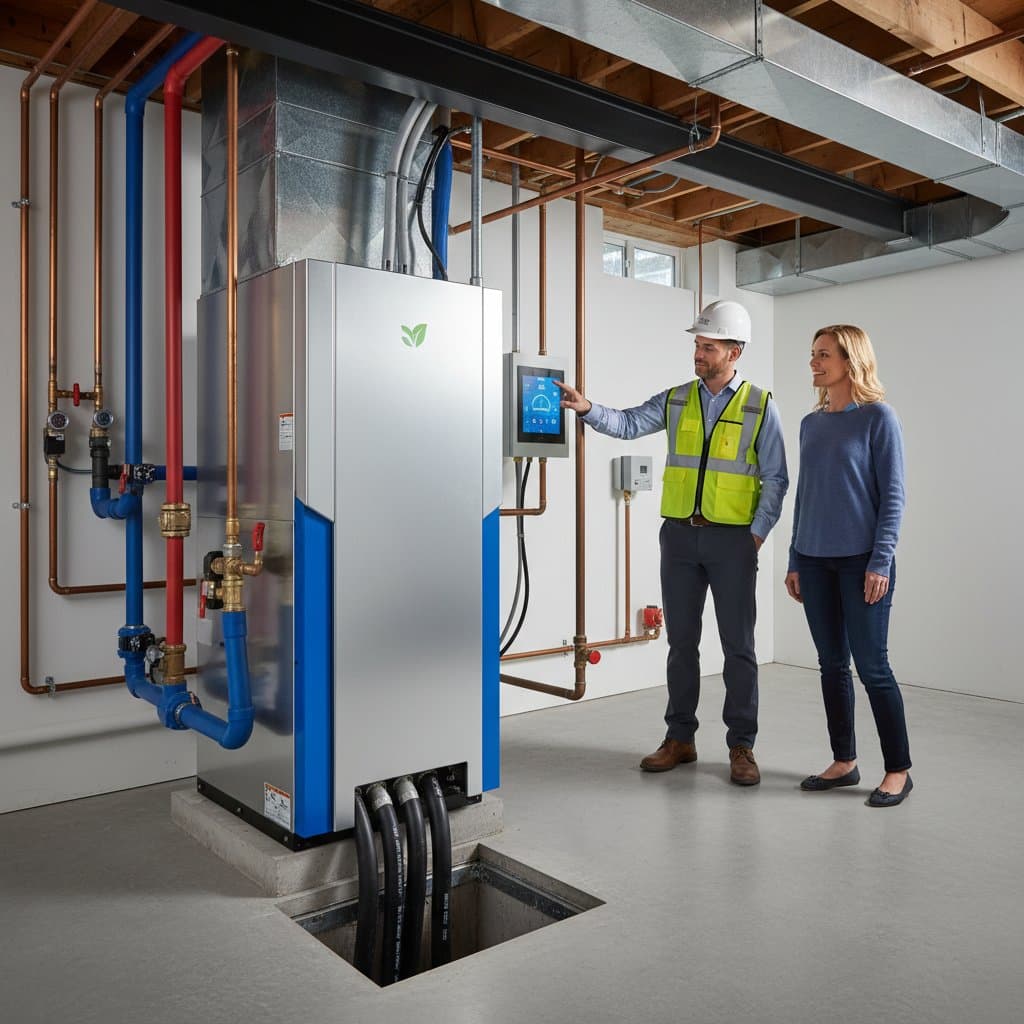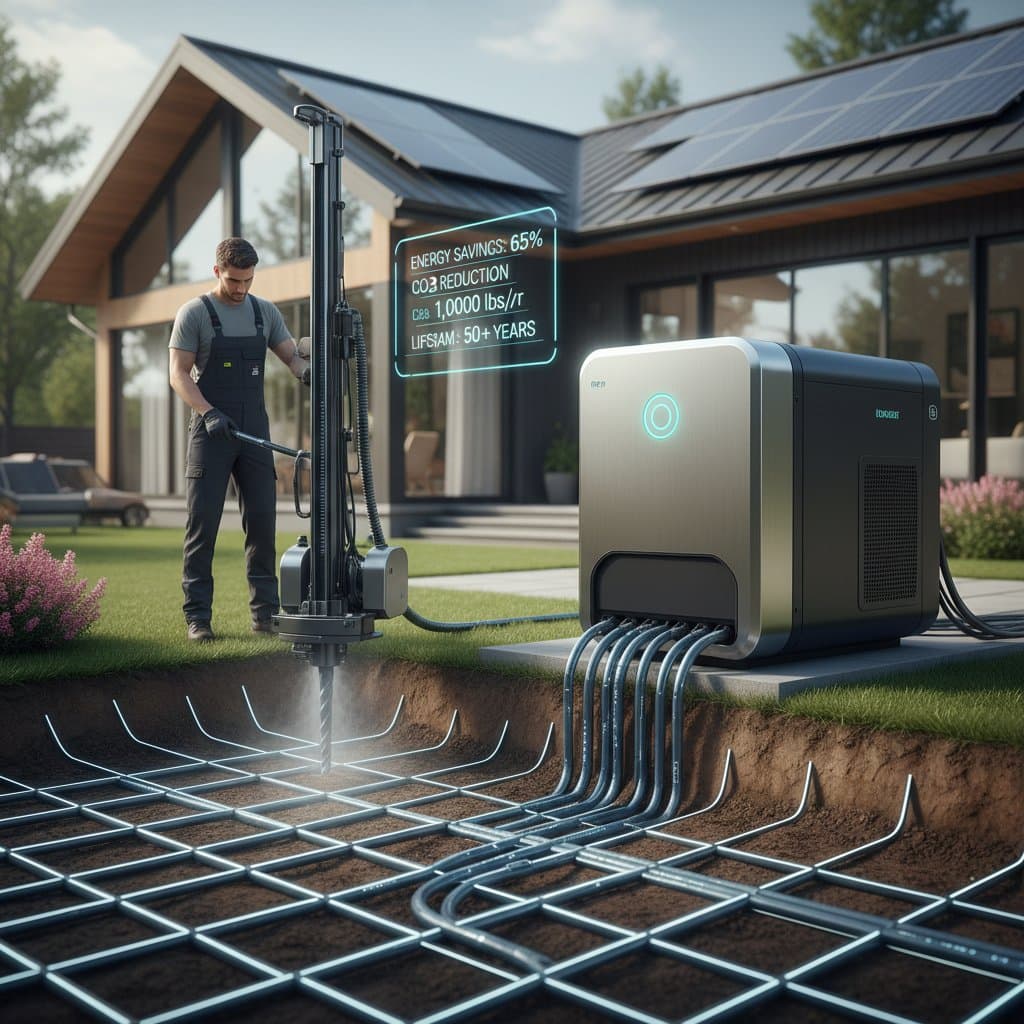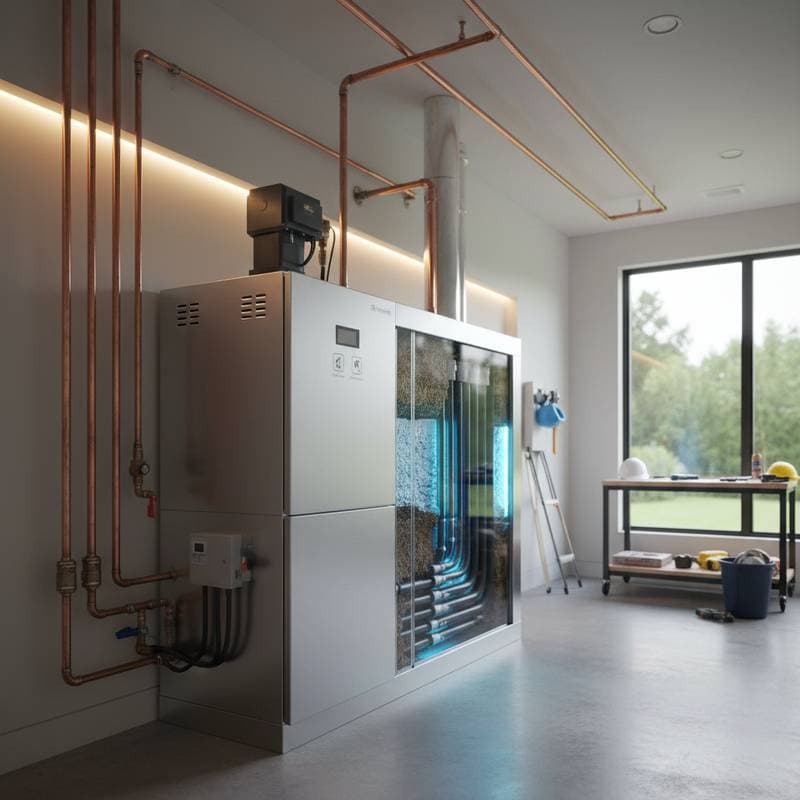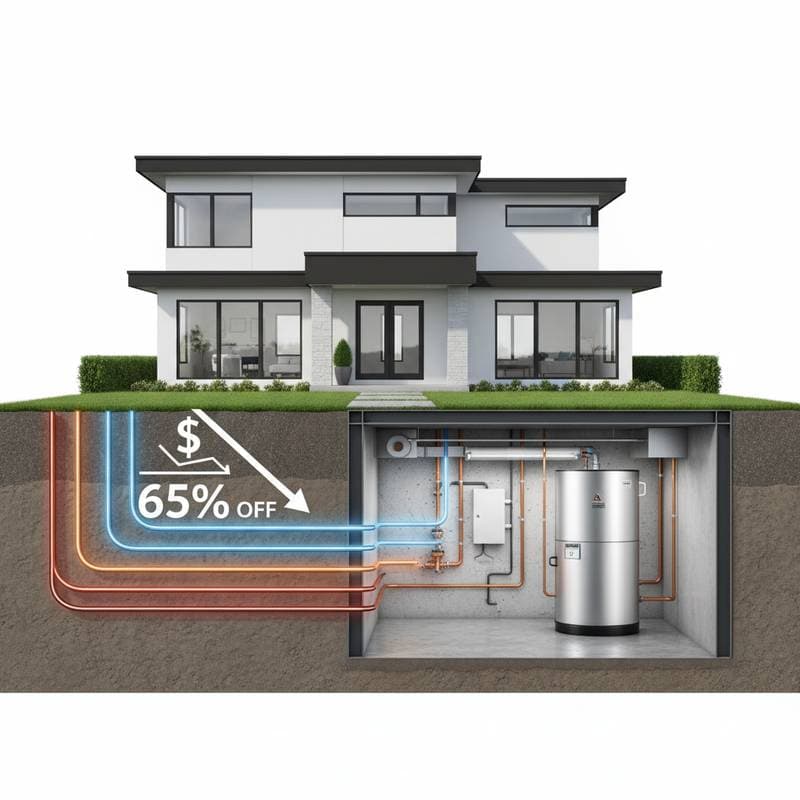Key Points
- A significant 35% price reduction in geothermal HVAC systems enhances accessibility for typical homeowners.
- Energy bill reductions range from 40 to 60 percent, influenced by regional climate, home insulation, and system configuration.
- Streamlined installation processes and expanded financing options yield robust return-on-investment timelines.
- Ground-source heat pumps now rival high-efficiency air-source units in initial costs, operational efficiency, and overall performance.
Understanding the Rise of Affordable Geothermal Systems
Imagine a home that maintains consistent comfort throughout the seasons without the hum of an outdoor unit or unpredictable spikes in energy expenses. Geothermal HVAC delivers this reliability, and a forthcoming 35% cost decrease transforms it from an elite option into an everyday choice.
Geothermal technology has long impressed with its engineering prowess, yet high upfront costs deterred widespread adoption. Advances in manufacturing, refined drilling methods, and enhanced government incentives now drive expenses downward. This shift opens doors for homeowners who previously viewed geothermal as an unattainable premium feature.
Benefits for Homeowners
Geothermal HVAC harnesses stable underground temperatures to regulate indoor climate via a closed-loop piping network that exchanges heat with the earth. This approach yields superior efficiency compared to traditional systems reliant on outdoor air fluctuations. Homeowners enjoy reduced energy use, extended equipment durability, and minimal upkeep demands.
The financial advantages prove compelling. Past installations for standard homes often exceeded $30,000, but a 35% reduction aligns costs with those of advanced air-source heat pumps or full furnace-air conditioner overhauls. Energy savings typically recover the investment in six to ten years, varying by local utility rates, building efficiency, and weather patterns.
Essential Planning Factors
Prospective adopters must evaluate several elements to ensure success:
- Site Evaluation - Analyze soil type and land availability to determine loop configuration. Vertical loops fit compact properties, whereas horizontal loops require broader open areas.
- Proper Sizing - Conduct a detailed heat load assessment to avoid inefficiency from oversizing or discomfort from undersizing.
- Available Incentives - Research federal tax credits, state rebates, and utility programs that offset expenses.
- Installer Qualifications - Select professionals accredited by organizations like the International Ground Source Heat Pump Association for optimal design and execution.
Thoughtful planning extends geothermal applications to include radiant floor heating, hot water production, and pool temperature control, maximizing versatility.
Detailed Cost Structure and Return Analysis
Geothermal projects comprise three primary expense categories:
- Ground Loop Setup - Accounts for 30 to 40 percent of total costs, with recent innovations in drilling and excavation accelerating affordability.
- Heat Pump Equipment - Represents 25 to 35 percent, offering lifespans of 20 years or longer with reliable performance.
- Ductwork and Controls - Covers the balance, often leveraging existing infrastructure for seamless integration.
While upfront outlays surpass conventional HVAC replacements, annual energy reductions of 40 to 60 percent, coupled with infrequent repairs and escalating utility prices, position geothermal among the top performers for long-term value.
Environmental Advantages and Performance Metrics
By drawing on renewable geothermal energy, these systems minimize carbon footprints versus fossil fuel-dependent alternatives. They transfer heat rather than produce it via burning, attaining efficiencies up to 400 percent in ideal setups. This translates to four units of heating or cooling output per unit of electricity input.
Additional perks include near-silent operation, zero outdoor emissions, and diminished use of potent greenhouse gases in refrigerants. Such features support broader sustainability goals while enhancing daily living quality.
Common Questions Addressed
Do geothermal systems work in every location?
Most sites accommodate them, but factors like soil properties, water table depth, and lot dimensions shape the installation approach. An expert evaluation confirms suitability and refines cost estimates.
How demanding is ongoing maintenance?
Routine tasks remain straightforward. The buried loop endures for generations, with upkeep limited to air filter replacements and annual inspections.
What integration options exist with existing homes?
Many retrofits connect to current duct systems, minimizing disruption while unlocking full efficiency benefits.
Steps to Adopt Geothermal Technology
Homeowners seeking dependable, cost-effective climate control can capitalize on this pricing evolution. Obtain multiple bids from certified specialists, investigate regional support programs, and calculate personalized savings projections. This proactive approach secures a resilient, eco-conscious upgrade tailored to individual needs.










